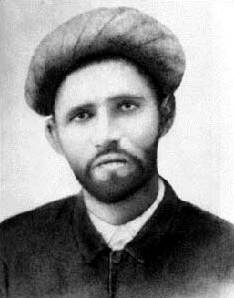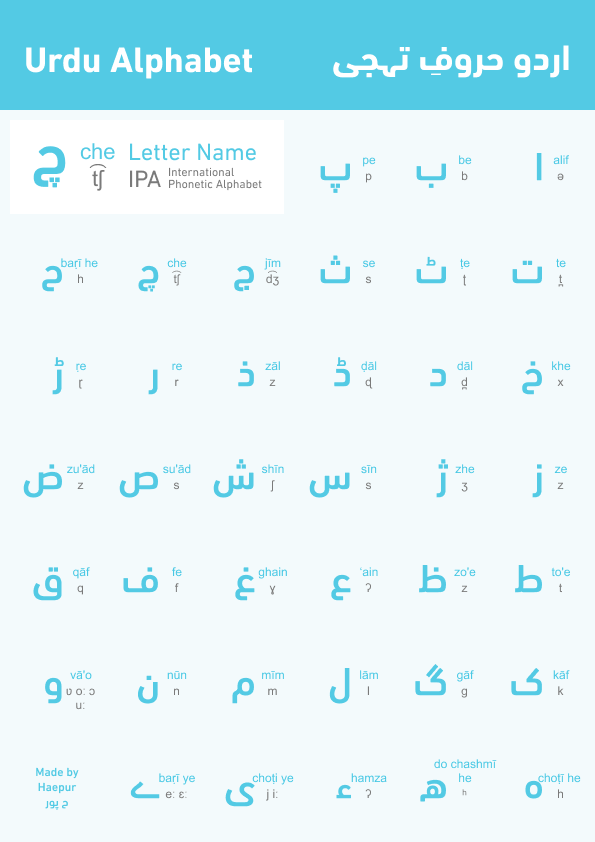|
Unity, Faith And Discipline
Faith, Unity, Discipline ( ur, ) is the national motto of Pakistan. It is regarded as the guiding principle of Pakistan's nationhood. Upon the independence of Pakistan, it was introduced and adopted as the national motto by the country's founder Muhammad Ali Jinnah. It is inscribed in Urdu at the base of the state emblem. The emblem itself is an adaptation of four components: wreath, crescent, star and scroll, with all components in the shield bounded by the wreath of the Jasmine flower, and the crescent and star crest depicted at the top. Origin The origin of the motto is derived from the country's founding father Muhammad Ali Jinnah. Jinnah related it to his personal example of life, and instilled a message to the youth of his time, as well as for Pakistan's future generations. On 28 December 1947, four months after the emergence of Pakistan on the world's map, Jinnah said: "We are going through fire: the sunshine has yet to come. But I have no doubt that with Unity, Fait ... [...More Info...] [...Related Items...] OR: [Wikipedia] [Google] [Baidu] |
Coat Of Arms Of Pakistan
The state emblem of Pakistan was adopted in 1954 and symbolizes Pakistan's ideological foundation, the basis of its economy, its cultural heritage and its guiding principles. Design The four components of the emblem are a crescent and star crest above a shield, which is surrounded by a wreath, below which is a scroll. The crest and the green colour of the emblem are traditional symbols of Islam. The quartered shield in the centre shows cotton, wheat, tea and jute, which were the major crops of Pakistan at independence and are shown in a form of shield and signify as the main agricultural base for the importance of the Nation's economy. The floral wreath, surrounding the shield, is '' Jasminum officinale'' (the national flower) and represents the floral designs used in traditional Mughal art and emphasizes the cultural heritage of Pakistan. The scroll supporting the shield contains the national motto in Urdu, "", which reads from right to left: (), translated as "Faith, Unity, Dis ... [...More Info...] [...Related Items...] OR: [Wikipedia] [Google] [Baidu] |
National Motto
This article lists state and national mottos for the world's nations. The mottos for some states lacking general international recognition, extinct states, non-sovereign nations, regions, and territories are listed, but their names are not bolded. A state motto is used to describe the intent or motivation of the state in a short phrase. For example, it can be included on a country's flag, coat of arms, or currency. Some countries choose not to have a national motto. Current sovereign countries *: '' There is no god but God; Muhammad is the messenger of God.'' ( ar, لا إله إلا الله، محمد رسول الله; ) *: ''You, Albania, give me honour, give me the name Albanian'' ( sq, Ti Shqipëri Më Jep Nder, Më jep Emrin Shqipëtar) *: ''By the people and for the people'' ( ar, بالشعب و للشعب; . *: ''Strength united is stronger'' ( la, Virtus Unita Fortior). *: No official motto. *: ''Each endeavouring, all achieving'' *: ''In Union and Liberty'' ( es, E ... [...More Info...] [...Related Items...] OR: [Wikipedia] [Google] [Baidu] |
Pakistan
Pakistan ( ur, ), officially the Islamic Republic of Pakistan ( ur, , label=none), is a country in South Asia. It is the world's List of countries and dependencies by population, fifth-most populous country, with a population of almost 243 million people, and has the world's Islam by country#Countries, second-largest Muslim population just behind Indonesia. Pakistan is the List of countries and dependencies by area, 33rd-largest country in the world by area and 2nd largest in South Asia, spanning . It has a coastline along the Arabian Sea and Gulf of Oman in the south, and is bordered by India to India–Pakistan border, the east, Afghanistan to Durand Line, the west, Iran to Iran–Pakistan border, the southwest, and China to China–Pakistan border, the northeast. It is separated narrowly from Tajikistan by Afghanistan's Wakhan Corridor in the north, and also shares a maritime border with Oman. Islamabad is the nation's capital, while Karachi is its largest city and fina ... [...More Info...] [...Related Items...] OR: [Wikipedia] [Google] [Baidu] |
Partition Of India
The Partition of British India in 1947 was the Partition (politics), change of political borders and the division of other assets that accompanied the dissolution of the British Raj in South Asia and the creation of two independent dominions: Dominion of India, India and Dominion of Pakistan, Pakistan. The Dominion of India is today the India, Republic of India, and the Dominion of Pakistan—which at the time comprised two regions lying on either side of India—is now the Pakistan, Islamic Republic of Pakistan and the Bangladesh, People's Republic of Bangladesh. The partition was outlined in the Indian Independence Act 1947. The change of political borders notably included the division of two provinces of British India, Bengal Presidency, Bengal and Punjab Province (British India), Punjab. The majority Muslim districts in these provinces were awarded to Pakistan and the majority non-Muslim to India. The other assets that were divided included the British Indian Army, ... [...More Info...] [...Related Items...] OR: [Wikipedia] [Google] [Baidu] |
Muhammad Ali Jinnah
Muhammad Ali Jinnah (, ; born Mahomedali Jinnahbhai; 25 December 1876 – 11 September 1948) was a barrister, politician, and the founder of Pakistan. Jinnah served as the leader of the All-India Muslim League from 1913 until the inception of Pakistan on 14 August 1947, and then as the Dominion of Pakistan's first Governor-General of Pakistan, governor-general until his death. Born at Wazir Mansion in Karachi, Jinnah was trained as a barrister at Lincoln's Inn in London. Upon his return to British Raj, India, he enrolled at the Bombay High Court, and took an interest in national politics, which eventually replaced his legal practice. Jinnah rose to prominence in the Indian National Congress in the first two decades of the 20th century. In these early years of his political career, Jinnah advocated Hindu–Muslim unity, helping to shape the 1916 Lucknow Pact between the Congress and the All-India Muslim League, in which Jinnah had also become prominent. Jinnah beca ... [...More Info...] [...Related Items...] OR: [Wikipedia] [Google] [Baidu] |
The Nation
''The Nation'' is an American liberal biweekly magazine that covers political and cultural news, opinion, and analysis. It was founded on July 6, 1865, as a successor to William Lloyd Garrison's '' The Liberator'', an abolitionist newspaper that closed in 1865, after ratification of the Thirteenth Amendment to the United States Constitution. Thereafter, the magazine proceeded to a broader topic, ''The Nation''. An important collaborator of the new magazine was its Literary Editor Wendell Phillips Garrison, son of William. He had at his disposal his father's vast network of contacts. ''The Nation'' is published by its namesake owner, The Nation Company, L.P., at 520 8th Ave New York, NY 10018. It has news bureaus in Washington, D.C., London, and South Africa, with departments covering architecture, art, corporations, defense, environment, films, legal affairs, music, peace and disarmament, poetry, and the United Nations. Circulation peaked at 187,000 in 2006 but dropped to 145,0 ... [...More Info...] [...Related Items...] OR: [Wikipedia] [Google] [Baidu] |
State Emblem Of Pakistan
The state emblem of Pakistan was adopted in 1954 and National emblem, symbolizes Pakistan's ideological foundation, the basis of its economy, its cultural heritage and its guiding principles. Design The four components of the emblem are a crescent and star crest above a shield, which is surrounded by a wreath, below which is a scroll. The crest and the green colour of the emblem are traditional symbols of Islam. The quartered shield in the centre shows cotton, wheat, Camellia sinensis, tea and jute, which were the major crops of Pakistan at independence and are shown in a form of shield and signify as the main agricultural base for the importance of the Nation's economy. The floral wreath, surrounding the shield, is ''Jasminum officinale'' (the national flower) and represents the floral designs used in traditional Mughal painting, Mughal art and emphasizes the cultural heritage of Pakistan. The scroll supporting the shield contains the national motto in Urdu, "", which reads from ... [...More Info...] [...Related Items...] OR: [Wikipedia] [Google] [Baidu] |
Roman Urdu
Roman Urdu ( ur, ) is the name used for the Urdu language written with the Latin script, also known as the Roman script. According to the Urdu scholar Habib R. Sulemani: "Roman Urdu is strongly opposed by the traditional Arabic script lovers. Despite this opposition it is still used by most on the internet and computers due to limitations of most technologies as they do not have the Urdu script. Although, this script is under development and thus the net users are using the Roman script in their own ways. Popular websites like Jang Group have devised their own schemes for Roman Urdu. This is of great advantage for those who are not able to read the Arabic script. MSN, Yahoo and some desi-chat-rooms are working as laboratories for the evolving new script and language (Roman Urdu)." Romanized Urdu is mutually intelligible with Romanized Hindi in informal contexts, unlike Urdu written in the Urdu alphabet and Hindi in Devanagari. Multinational corporations often use it as a cost ... [...More Info...] [...Related Items...] OR: [Wikipedia] [Google] [Baidu] |
National Symbols Of Pakistan
Pakistan has several official national symbols including a flag, an emblem, an anthem, a memorial tower as well as several national heroes. The symbols were adopted at various stages in the existence of Pakistan and there are various rules and regulations governing their definition or use. The oldest symbol is the Lahore Resolution, adopted by the All India Muslim League on 23 March 1940, and which presented the official demand for the creation of a separate country for the Muslims of India. The Minar-e-Pakistan memorial tower which was built in 1968 on the site where the Lahore Resolution was passed. The national flag was adopted just before independence was achieved on 14 August 1947. The national anthem and the state emblem were each adopted in 1954. There are also several other symbols including the national animal, bird, flower and tree. Minar-e-Pakistan The Lahore Resolution (''Qarardad-e-Lahore'') ( ur, ), also known as the Pakistan Resolution, was a formal political ... [...More Info...] [...Related Items...] OR: [Wikipedia] [Google] [Baidu] |
National Mottos
This article lists state and national mottos for the world's nations. The mottos for some states lacking general international recognition, extinct states, non-sovereign nations, regions, and territories are listed, but their names are not bolded. A state motto is used to describe the intent or motivation of the state in a short phrase. For example, it can be included on a country's flag, coat of arms, or currency. Some countries choose not to have a national motto. Current sovereign countries *: '' There is no god but God; Muhammad is the messenger of God.'' ( ar, لا إله إلا الله، محمد رسول الله; ) *: ''You, Albania, give me honour, give me the name Albanian'' ( sq, Ti Shqipëri Më Jep Nder, Më jep Emrin Shqipëtar) *: ''By the people and for the people'' ( ar, بالشعب و للشعب; . *: ''Strength united is stronger'' ( la, Virtus Unita Fortior). *: No official motto. *: ''Each endeavouring, all achieving'' *: ''In Union and Liberty'' ( es, E ... [...More Info...] [...Related Items...] OR: [Wikipedia] [Google] [Baidu] |
.png)




